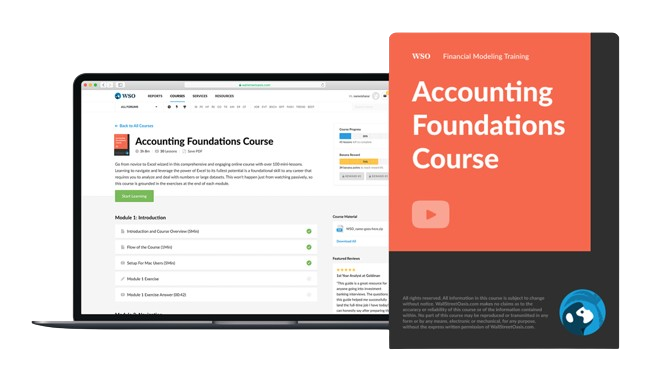Accrued Interest
The amount of interest accrued on a loan or other financial obligation on a particular date but not yet paid
What Is Accrued Interest?
Accrued Interest refers to the interest that has been earned or charged on a loan or financial obligation but has not been paid yet. This can be money that a borrower owes or a lender expects to receive.
When we talk about accrued interest in the context of corporate bonds, it's the interest that has accumulated since the last time it was paid. This concept is a characteristic of accrual accounting and follows revenue recognition guidelines and adjustment accounting principles.
In accounting, accrued interest is recorded as an adjustment at the end of a specific accounting period. This helps keep financial records accurate. Then, on the first day of the next period, this entry is reversed.
For example, assume that interest is paid on the 22nd of each month and the settlement period is at the end of each calendar month. For September, an 8-day interest date from 23rd to 30th is required. It will be posted as part of the adjustment journal at the end of the month.
Whether this accrued interest is considered income or an expense depends on whether a company is lending money or borrowing it. If a company is lending money, the accrued interest is treated as income. If it's borrowing money, the accrued interest is seen as an expense.
Additionally, any part of this accrued interest that remains unpaid or uncollected is listed on the company's balance sheet as either an asset (if the company expects to receive it) or a liability (if the company owes it). This accrued interest is expected to be settled within a year and is usually categorized as a current asset or a current liability, depending on whether it's money the company will receive or has to pay out soon.
Key Takeaways
-
Accrued interest in accounting refers to the amount of interest that has accumulated on a financial obligation but has not been paid yet. It can be income for lenders or an expense for borrowers.
-
Accrued interest is a concept in accrual accounting, where revenues and expenses are recognized when they are incurred, not necessarily when cash is exchanged. This provides a more accurate financial picture.
-
Accrued interest is posted as an adjustment journal entry at the end of an accounting period and reversed on the first day of the next period.
-
Unpaid or uncollected accrued interest is recognized as an asset or liability on the balance sheet, typically as a current asset or liability.
Accrual Interest in Accounting
In accrual accounting, it is the amount of interest on financial debt that accrues during the reporting period but has not yet received cash payments during that period.
Accrual accounting requires that revenues and expenses be recognized during the accounting period in which they occur, regardless of when cash payments are made.
Accrual accounting methods provide a more accurate picture of a company's financial position than cash-based accounting methods.
The amount of interest accrued will be posted as an adjustment entry at the end of the month by both the borrower and the lender.
An entry consists of interest income or interest expense on the income statement and an asset or liability account on the balance sheet. Accrued interest is usually received or paid within one year and is therefore classified as a current asset or a current liability.
The borrower's entry includes the debit of the interest expense account and the credit of the accrued interest account. The lender's entry includes the debit of accrued interest and the credit of interest income.
Accrual Interest in Accounting Example
Suppose you have a $10,000 loan receivable with an 8% interest rate that you received payment for the period ending on the 22nd of the month. In this scenario, the calculation to get the additional interest income earned from the 23rd to the 30th of the month is as follows:
(8% x (8/365)) x $10,000 = $17.53
As a result, accounts receivable are recorded on the balance sheet and classified as current assets. The same amount is also reported as income statement revenue.
This guarantees that if a cash transaction occurs the following month, the net effect of only that portion of the income or expenses earned or incurred during the current period will remain in the current period.
In the above example, on the 22nd day of the second month, the lender will receive $65.75 (8% x (30/365) x $10,000). Of this, $17.53 related to the previous month was posted as an adjustment journal entry at the end of the previous month, recording revenue for the month earned.
The reconciliation journal entry is canceled in the second month, so $48.22 ($65.75 - $17.53) of the payment is posted in the second month. This is equivalent to 22 days of interest in the second month.
Accrued Interest in Bonds
When buying a bond in the secondary market, the buyer must pay the seller interest accrued as part of the total purchase price.
Investors who buy a bond at any time between the last coupon payment and the next coupon payment will receive full interest on the scheduled coupon payment date if they are the bond owner.
However, because the buyer has not earned all of the accrued interest during that period, that portion of the interest earned by the seller must be paid to the bond seller before the sale of the bond.
Suppose your bond has a fixed coupon paid quarterly on 31st March, 30th June, 30th September, and December 31st of each year.
If the bondholder sells this bond on December 1st, the buyer will receive the full coupon payment on the next coupon date scheduled for December 31st.
In this case, the buyer must pay the seller the accrued interest between 30th September and 31st December. Generally, bond prices include interest accrued. This price is called the full price or dirty price.
In the case of convertible bonds, after the conversion of bonds into shares, the bondholder stops receiving interest payments.
When an investor converts a convertible bond, the final payment is usually made to the bondholder to cover the amount incurred after the last verifiable payment date. This final interest payment is an adjustment of the accrued interest rate.
Accrued Interest in Bonds Example
Accrued Interest is an important consideration when buying or selling bonds. Bonds provide compensation to the owner for the loaned money in the form of regular interest payments. Payments for these interests, also known as coupons, are usually paid semi-annually.
If the bond is bought or sold on a date other than these two dates of the year, the buyer pays the previous interest. The new owner will receive half a year's interest payment on the next payment date. Therefore, the previous owner must pay the interest accrued before the sale.
Let’s say, there is a bond with a face value of $1,000 and a 12% semiannual coupon. The payment of coupons is made twice a year on June 30 and December 31 and an investor plans to buy the bond on September 30.
The rules for calculating the number of days for which it is to be paid by the buyer are a bit different in the bond market.
Most US corporate and municipal bonds use the 30/360 rule, so it is expected to have 30 days each month (regardless of the actual number of days in a particular month) 2. This example uses this rule for day calculations.
Step 1: Calculate the exact number of days between the date of the last coupon payment (June 30) and your purchase date (September 30). In this example, the number of days (based on the 30/360 convention) is 90 days.
Step 2: Calculate accrued interest by multiplying the day count by the daily interest rate and the face value of the bond.
Thus, accrued interest = 90 x (12% / 360) * $1,000 = $30
Step 3: Add the value obtained in Step 2 to the face value of the bond to get your purchase price.
Purchase price of bond = $1,000 + $30 = $1,020
On the next coupon payment date (December 1), you will receive $60 in interest.
But since you paid $30 in accrued interest when you purchased the bond, the net interest received by you is $30 ($60 - $30), which is precisely the amount of interest you should have received for the 90 days that you owned the bond until the next coupon payment (September 30 to December 31).
Accrued Interest FAQs
Accrued interest is cumulative interest that has been recognized and recorded, but has not yet been paid as of a particular date. Regular interest is a payment made in exchange for borrowing money from a lender.
Accrued interest is the interest accumulated on a loan but not paid by a specific date. It is considered as an expense for the borrower and an income for the lender and is calculated at the end of the loan accounting period.
Accrued interest means a portion of interest expense on loans and down payments that are accrued during the accounting period but have not yet been paid by the borrower.
In accrual accounting, income and expenses must be recognized in the accounting period in which they are incurred. Accounts payable are expenses incurred before payment; therefore the company is responsible for future cash payments. Therefore, accrual expenses are also called liabilities.
First, divide your interest rate by 365 to find the interest rate for a single day, after which you need to multiply this rate by the number of days for which accrued interest needs to be calculated.
The amount of interest that has been earned but has not been yet collected such as a coupon payment is accrued interest. The interest is earned every single day of the period, that is why interest accrued has to be paid while purchasing a bond between two coupon periods.




or Want to Sign up with your social account?